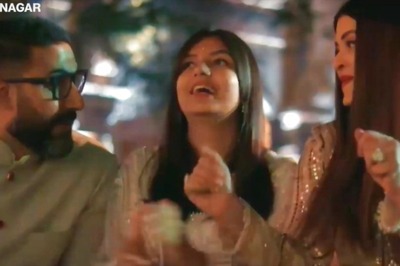
views
In the 1950s and 60s, writers and musicians Bob Dylan, Stanley Kubrick, Arthur Miller, and Dylan Thomas stayed at The Hotel Chelsea in New York because it was cheap. But sometimes it wasn’t cheap enough, so they left works of art behind to pay the rent.
The Hotel Chelsea is one of the original art hotels. Since the 60s, boutique hotels--or personal, luxury hotels with a quirk--have sprung up all around the world, along with a subset furnished with artwork, that have come to be called “art hotels”.
Some art hotels were created by delinquent hotel renters, like The Hotel Chelsea, while others were hang-outs-cum-studios for painters who later left their art behind--Picasso and Matisse’s brilliant paintings created at the Colombe d’Or Hotel in Provence now adorn the hotel’s walls.
As more copycat art hotels have sprung up, they’ve started to simply feature artwork gathered by the owners themselves, or commissioned from contemporary painters. These art hotels were for years confined to the works of distinguished artists, but newer hotels are experimenting. The Fox Hotel in Denmark shows off everything from manga cartoons to street art. At the Propeller Island Hotel in Berlin, a guest can sleep in a coffin or Egyptian pyramid-themed room.
Some hotels have also taken the experience further, adding new art exhibitions regularly and hosting musical performances, like the Gladstone Hotel in Toronto.
The three stories of Le Sutra illustrate the three universal ‘gunas’, or forms of energy which make up a person or other living thing’s attributes.
The Sattvic floor (on the third level), has been designed in minimalist style to match the Sattva attribute, with simple floor details like the Mandu self-purification water system. The Sattvic floor is the only floor completed so far.
The other two floors, Rajas and Tamas, will also depict the characteristics they are named for. The Rajasic floor will be “passionate”, with a shringar, or mirror room, in which women can make themselves up, and the Tamas floor will be “erotic” including details such as a chair inspired by Ravana.
As a guest takes a lift up the three stories of the hotel, she will see the snake of the Kundalini at the bottom floor, and then rise up through all the seven chakras. The hotel has taken inspiration from yoga, ayurveda, Indian mythology, culture, and thousands of years of Indian history. The goal: To depict all of this cohesively through contemporary art.
PAGE_BREAK
The Bajaj family, who created Le Sutra and own the properties in Union Park that house Olive and Out of the Blue Restaurants and Pali Hill Hotels, knew they had to find a way to put their new hotel on the hospitality map. “It would be the first of its kind in the world and we could capture an unoccupied space,” says Radha Bajaj, director of Le Sutra. Bajaj also says they thought it was relevant because they saw clientele moving from just luxury to also “mindspace”.
“People are interested in living projects, which they perceive as different from cookie-cutter places which are taking points at many occasions.” Cookie-cutter Le Sutra isn’t. The hotel is open through special invitation now, and will be open to the public in March. Price: approximately $250 a night.
An Austalian connection
Le Sutra’s exterior is a mural painted by Australian filmmaker Baz Luhrmann and painter Vincent Fantauzzo. Le Sutra launched the hotel with a live painting of the mural by the Australian artist with the help of local artists and deaf children from the NGO Deeds.
The project is personal to both Luhrmann and Fantauzzo: Luhrmann has often drawn inspiration from Bollywood for his films such as Moulin Rouge; and in the way Bob Dylan inhabited the Hotel Chelsea, Fantauzzo once stayed at the Pali Hills Hotel for a long period because it was cheap. The finished mural depicts dancers and reads, “A life lived in fear is a life half lived, so dance.”
“Any time someone tells you not to dance you know you’re being oppressed,” Luhrmann says.
The artists, both Australian, also wanted to come to the launch of Le Sutra to speak out against the attacks on Indians in Australia, saying the people of Australia are “ashamed and disgusted” by what’s happening.
Luhrmann says he really liked the idea of an Indian art hotel. “Art is too often put in rarefied places. I love that we did it through a theatrical event, and that art is now present in hotel rooms and places other than museums.”
















Comments
0 comment